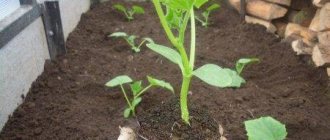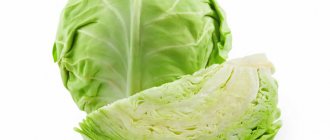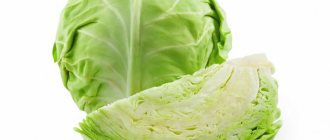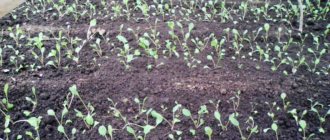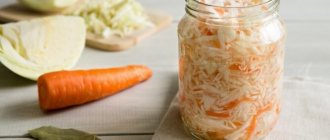Greenhouse / Current issues
Sauerkraut is an incomparably healthy and tasty preparation. It is important to prepare it correctly. Otherwise, instead of a crispy, juicy snack, you will get a soft, slippery product. The reason lies in small errors that affect the cooking result.
- 1 Do not release generated gases
- 2 Do not use oppression
- 3 Left at room temperature too long
- 4 Late cabbage is fermented
- 5 Use iodized salt
- 6 Not enough salt
How to tell if cabbage has already fermented
The readiness of a fermented product is determined quite simply.
When gases and foam cease to be released on the surface of the snack , and the brine becomes light, the product is ready. It tastes salty and sour. The cabbage itself should be crunchy.
Expert opinion
Mikhailov Ivan Maksimovich
Furniture maker. Work experience 3 years.
If a small amount of crunchy snack is left at room temperature without brine for 3 hours, and after that it does not lose its crunch, then the product is completely ready.
The readiness of the snack is indicated by a decrease in its volume . So, for example, from 12 kg of fresh cabbage, about 10 kg of pickled product is obtained.
They monitor the readiness of the product and according to time guidelines . But it is important to consider the volume of sauerkraut. If in a large pan, the appetizer will be ready in about 5-6 days. In a 3-liter jar the process will be 2 times faster. When the allotted time has passed, the product is tasted to make sure it is ready.
How to do it right
To properly release air from a can , no special knowledge or skills are required:
- Choose an item from the right material (preferably wood).
- Pierce to the bottom several times with a sharp object.
Attention! A blunt tip can compress the cabbage in the lower layers along with the gas.
When the brine in the jar becomes completely transparent, the cabbage is ready for use - it can be stored for long-term storage.
Take note:
The best recipes for preparing cabbage in tomato juice
The best cabbage preparations at home
General algorithm for fermenting cabbage at room temperature
In order for cabbage to retain the maximum amount of nutrients , it must be properly fermented.
Cabbage selection
For pickling, choose heads of white cabbage of mid-season and late-ripening varieties.
Heads of early varieties are not suitable for pickling , as they contain little sugar and their leaves are too tender. When fermented, the product will turn out soft and tasteless.
Choose large white forks because they contain more sugar, which affects the fermentation process.
The head of cabbage should be dense. The tighter it is, the better the sauerkraut will crunch.
It should taste sweet, without bitterness, juicy and crispy . The tastier the fresh cabbage, the tastier the final product will be.
Advice. When choosing cabbage in late autumn, make sure that the heads of cabbage are not frostbitten.
Optimal fermentation time
Sauerkraut is fermented in autumn and winter . In autumn, mid-season varieties are processed. The process begins in September; the finished product must be stored in a cool place.
Late varieties begin to ferment 2-3 months after harvesting - in November and December . During storage, sugar accumulates in the heads of cabbage and they become juicier. If you prepare late varieties earlier, the fermented product will turn out to be bitter and have an unpleasant odor.
Selection of containers
is considered ideal for fermentation . It should be oak, birch or linden. A spruce barrel is pre-prepared. It is filled with cold water for 25 days, the water is changed every 5 days. The procedure removes resins and tannins from wood.
An alternative to wooden containers is glass jars . Cabbage is fermented in 3-liter jars, where the fermentation process takes place. After its completion, the jars are immediately put away for storage, without transferring the finished product to another container.
Ceramic dishes are suitable for fermentation . The appetizer is fermented in enamel buckets and pans. The dishes must be free of chips and damage, so that the lactic acid released during fermentation does not react with the metal.
Steel and aluminum containers are not suitable for fermentation . Lactic acid in such dishes reacts with metal. In this case, harmful substances are released, and the product acquires an unpleasant taste.
The use of plastic containers for pickling is a controversial issue . Only food grade plastic is suitable for fermentation. Low-quality dishes contain harmful chemical compounds, so the fermented snack will acquire an unpleasant taste and absorb the smell of the dishes.
Cooking cabbage
The heads of cabbage selected for pickling are cleared of the upper green leaves , and the top 2-3 leaves are removed. Then rinse under running water and dry with a paper towel.
Expert opinion
Mikhailov Ivan Maksimovich
Furniture maker. Work experience 3 years.
The heads of cabbage are cut into 2-4 parts and chopped with a special shredder or knife . The chopped vegetable is placed in the prepared container. Each layer of cabbage is salted - 20 g of coarse salt per 1 kg of cabbage.
Advice. Do not use the stump of purchased cabbage in the preparation, as most of the nitrates accumulate in it. Iodized salt should not be used for fermentation.
The cabbage mass is lightly tamped until the juice appears . The container is not filled to the top, leaving space so that the juice released during the fermentation period does not flow out.
are added to cabbage to taste : bay leaves, allspice, dill seeds, hot peppers, cumin, anise, etc.
When the container is filled, cover the mass on top with a plate of smaller diameter . A pressure is placed on it (a jar of water or a stone) so that the cabbage is always completely covered with juice.
Advice. Do not use metal objects as pressure or wrap them in a plastic bag so that the metal does not come into contact with the brine.
Sourdough time
The container with the workpiece is placed in a warm place (optimal temperature is from +18 to 22°C). Make sure that the product is not exposed to direct sunlight.
The first signs of fermentation are the appearance of gas bubbles and foam on the surface, which must be removed. Twice a day, the workpiece is pierced with a wooden skewer to the bottom to release accumulated gases.
If you do not release the bitterness and do not remove the foam, the fermented product will turn out bitter . When the foam stops releasing, the fermentation process slows down, which means the product is ready.
Possible problems
If little juice is released during the first day, water is added to the workpiece so that the crushed mass is completely covered.
The bitter taste of the snack indicates that during preparation the green leaves were not removed or the foam was not removed from the fermented product.
If the finished snack turns out soft and does not crunch, it means there is not enough salt in it.
. An excess of carrots can also soften cabbage. Not enough salt or using too much pressure will cause the cabbage to be too tough.
The appearance of mucus on the cabbage indicates that the temperature during fermentation was disturbed, iodized salt was used, a lot of carrots were added, or there are chemicals in the cabbage. This snack cannot be eaten in its natural form, but it is suitable for preparing hot dishes.
At low temperatures, a film may form on the surface of the workpiece . The top layer of the product is removed, the plate and pressure are washed.
If mold appears on the surface, the top layer of cabbage is discarded. Mold will not appear if you put horseradish leaves on top.
Is it necessary to pierce sauerkraut?
Several strains of fungi and bacteria live on the surface of cabbage fruits. These microorganisms begin to actively multiply in airless conditions, feeding on the carbohydrates of cabbage juice actively secreted by salted leaves. During this interaction, esters are released, causing the characteristic smell of fermented products.
Gradually, the environment in the container oxidizes, most of the bacteria die off, and only lactobacilli remain. At this point, chemical reactions are reduced to converting glucose into lactic acid. The process continues until all glucose compounds are completely converted into acid. As soon as this happens, the foam ceases to stand out, and the brine becomes transparent.
pros
- The main advantages of the cabbage piercing procedure:
- the ability to avoid mold;
- improving the taste of products.
Minuses
The disadvantages of the technique in question are associated with its incorrect implementation.
- If the temperature regime is not observed and metal objects are used to pierce the cabbage mass, the following processes can be observed:
- spread of harmful microorganisms upon contact with air;
- the death of most of the lactobacilli, which leads to a stop in the fermentation process.
Where and how to store cooked cabbage
Expert opinion
Mikhailov Ivan Maksimovich
Furniture maker. Work experience 3 years.
The finished cabbage is placed in a cellar or basement, refrigerator or on a glazed balcony . Store in the container in which it was prepared, or place in glass jars.
The optimal storage temperature for fermented snacks is from 0 to +2°C. At higher levels, the acidity of the product decreases and it loses its elasticity.
The shelf life in barrels at optimal temperature is 8 months, in glass jars - 6 months.
They don't add enough salt
Another main mistake during fermentation is the incorrect proportions of salt and cabbage. A small amount of white matter cannot provide the impetus to start the fermentation process. After all, if there is not enough salt, then the cabbage will not release enough juice. And when there is enough of it, then a lot of brine is formed. It is necessary to place the jar in a deep container in advance so that excess liquid drains there.
For successful fermentation, it is more correct to use rock salt (coarse salt, without additives) at a rate of about two tablespoons of white powder per 1 kg of cabbage. Over-salted workpiece also does not bode well. The sauerkraut will be too salty or begin to taste bitter. This situation can be easily corrected by adding apples and carrots to it.
So, follow all the recommendations, then you will get crispy and aromatic sauerkraut without flaws. It will also delight you with excellent taste and add to your health.
How many days is cabbage pickled?
Pickling is an ideal way to preserve vegetables. If you follow the right proportions of ingredients, you get a crispy and savory snack. The only negative is the need to keep the vegetable mass warm for a limited period of time.
Attention! To determine how many days to ferment cabbage at room temperature, you need to take into account the type of vegetable, temperature, amount of ingredients and spices.
Only late and mid-ripening varieties are selected for fermentation. They are distinguished by their sweet taste, dense heads and elastic leaves. The fermentation process is greatly simplified due to the presence of sugar in the structure of the vegetable. The Belosnezhka, Podarok, Belorusskaya and Amager varieties are ideal for pickling.
The fermentation time of cabbage is influenced by various factors, which include the amount of salt added. It is advisable to adhere to the correct ratio, so salt by weight of the vegetable mass should be 2-3%. For 10 kg of mixture, 200 g of seasoning is added.
Fermentation begins only at high temperatures. Therefore, properly prepared vegetable mass is left at room temperature, which is 18-22°C.
It is impossible to say exactly how long cabbage should be salted before it is ready, so the appetizer is checked periodically, and gases are removed from it by piercing it with a wooden skewer.
Typically, fermentation is carried out over a period of 3 to 5 days. At high temperatures, all vitamins are preserved, and due to the acid content in the vegetable, the appearance of microbes is prevented.
If you know at what temperature to ferment cabbage and how many days you need to keep it in the room, you will get a very tasty and crispy product. The ideal temperature is considered to be 21°C. On about the fifth day, the vegetable mass becomes sourish-winey and pleasant to the taste and is moved to a cold room.
Attention! If the mass is immediately moved to a cold place, this will lead to spoilage of the product.
Pickling late cabbage
A common mistake made by canning enthusiasts is using late varieties of cabbage for pickling. They keep well for a long time due to their low sugar content. This is what significantly reduces the ability to ferment. However, sugar accumulates in late cabbage varieties during storage. This feature allows you to ferment vegetables starting in December, but not earlier. By then the amount of sugar will reach the desired level.
By what characteristics can late ripening varieties be distinguished from early ripening ones? They usually have well-fed heads of cabbage, and the leaves are rough, dense and thick. Cabbage, which is suitable for fermentation in September and October, is the complete opposite: it has a porous head and juicy leaves.
How to tell if a vegetable has fermented
The readiness of the product is very easy to determine. To do this, the workpiece is periodically checked. If foam no longer appears on the surface and no gas bubbles appear, this indicates that the pickled product is ready. The brine in which the mass is stored becomes significantly lighter.
Despite the fact that each recipe indicates how long it takes to ferment cabbage in jars or other containers, it is advisable to check the readiness yourself. The vegetable should be crunchy and will definitely have a salty-sour taste.
Attention! To check, it is recommended to leave a little of the workpiece at room temperature for three hours. If after this time the product still crunches, this means that the fermentation process has ended.
To understand how many days cabbage is salted, the change in its volume is taken into account. For example, if 12 kg of finely shredded white cabbage was used to prepare the preparation, then after the cooking process about 10 kg of pickled vegetable remains.
If you focus on the volume, taste and gas bubbles, it is easy to understand how long to ferment the product. This takes into account the size of the container chosen for storing the vegetable. If a large container is selected, the fermentation process lasts 5-6 days. If a three-liter glass jar is used, the product is prepared within three days.
What you can pierce and what you can’t
It is recommended to use a long thin object made of wood , such as a knitting needle or a sushi stick. Housewives also use ceramic knives, as they are guaranteed to leave no odor. But in this case, they act with caution, since ceramics are fragile: if the tip of the knife breaks off, it will remain in the jar.
You cannot make punctures with a metal object . Housewives traditionally pierce the workpiece with an ordinary knife and make a big mistake. When interacting with metal, cabbage loses its beneficial substances, although the taste may remain the same. In addition to metal, it is not recommended to use plastic, since if it is of poor quality, it may leave an odor or stain the vegetable.
Step-by-step pickling instructions
To get a tasty and healthy preparation, it is important to use the right recipe. You should know how many days cabbage should be fermented so as not to leave it at room temperature longer than expected.
Choice of cabbage
First of all, heads of cabbage suitable for pickling are selected. For this purpose, the following recommendations are taken into account:
- Mid- and late-ripening varieties are ideal;
- Heads that ripen too early do not contain enough sugar for optimal fermentation, so they will not produce a juicy, crisp snack;
- Only large heads of cabbage and white colors are selected;
- Before use, it is recommended to squeeze the head of cabbage a little to ensure its density;
- It is advisable to try the leaf: it should be juicy and sweet.
Attention! Heads of cabbage are selected for pickling only in late autumn, and it is desirable that the vegetable lies in the beds for as long as possible, surviving several frosts.
Suitable container
The container for pickling should be convenient so that you can easily understand how much to ferment the cabbage under pressure.
When choosing a suitable container for fermentation, the following is taken into account:
- Wooden barrel . It is desirable that it be made of birch, oak or linden. The container is filled with water for 25 days, and the liquid is changed five times. This allows you to completely get rid of tannins and resin.
- Glass jars. They can have different volumes, but 3-liter jars are usually chosen. First stored at room temperature, then moved to the refrigerator or other cool place.
- Ceramic tableware. It can be used to store pickled vegetables.
- Enameled buckets or pans. They are affordable, and with their help it is easy to determine how many days sauerkraut is ready. But only products are selected whose enamel is free of any damage. Otherwise, the lactic acid present in the vegetable will react with the metal walls.
Attention! Utensils made of steel or aluminum are not suitable for pickling: when combined with lactic acid, harmful substances are released, and the product becomes tasteless.
It is not recommended to use plastic containers, although sometimes housewives use food-grade plastic products.
Fermentation period
To get a tasty snack, it is important to understand the correct proportions of ingredients and determine how long to salt the cabbage. The fermentation procedure is performed in late autumn or early winter. At this time, suitable heads of cabbage for sourdough are collected.
The latest varieties are harvested in the tenth of December. During cold weather and lying for a long time, a lot of sugar accumulates in the vegetable, it becomes juicy and sweet. If you remove such heads of cabbage too early, they will smell unpleasant and taste bitter after cooking.
Cooking process
To obtain a juicy and tasty pickled vegetable, the following steps are performed:
- hard and dirty upper leaves are removed;
- the head of cabbage is washed and dried;
- cut into several pieces, which are finely chopped;
- the mass is loaded into a jar or barrel in several layers;
- salt is added (you cannot use iodized salt) and other ingredients. For 1 kg of vegetable, about 20 g of salt is used;
- the stalk is thrown away;
- The vegetable mass is compacted to obtain juice, which should cover the vegetables.
Attention! Before you start cooking, it is advisable to figure out how to understand that sauerkraut is ready, so as not to overcook it in the room.
If the mass is fermented in a small jar, it is transferred to the cold after three days. Sometimes housewives do not know whether they need to pierce cabbage when pickling. This is a mandatory procedure to remove carbon dioxide bubbles. If this is not done, the product will turn out bitter.
After filling the container with cabbage, it is covered with a small plate on which a pressure is placed. Typically a jar of water or a large stone is used for this. This allows you to completely cover the vegetable mass with the released juice.
Attention! You cannot use metal products as oppression so that they do not come into contact with the juice.
Pickling time
Expert opinion
Mikhailov Ivan Maksimovich
Furniture maker. Work experience 3 years.
The most important thing in the cooking process is the period during which the salting occurs. To understand when sauerkraut is ready, you should consider several factors:
- container size;
- presence or absence of carbon dioxide bubbles;
- volume of vegetable mixture;
- taste of pickled vegetable.
Before starting the cooking process, the housewife needs to figure out how to understand that cabbage has fermented in a pan or jar. If there are no bubbles or foam, and the vegetable becomes sourish-salty, it can be transferred to a cold place.
Use iodized salt
For preparation, you need to use only regular salt, without any additives. If you ferment cabbage with iodized salt, it may begin to rot and taste bitter. Your favorite dish will definitely be spoiled. This will happen thanks to iodine, which is part of this salt, which slows down the fermentation process. Also, the cabbage will not be crispy; mold or darkening may appear on it, which will significantly deteriorate the taste of the product.
According to some housewives, they use iodized salt and see no difference. They can be recommended to conduct a small experiment: ferment part of the cabbage with regular salt, and the other part with iodized salt. The difference will be immediately noticeable. Although salt with iodine is very useful, it is not suitable for pickling.
Main problems
Difficulties often arise when preparing pickled vegetables. They are often associated with the fact that people do not know how many days to ferment cabbage at home. They miss the deadline when it is necessary to transfer the workpiece to the cold, and the product turns sour.
Other problems include:
- lack of the required amount of juice, but you can cope with this by adding water;
- if you do not pierce the mass with a skewer, the carbon dioxide will cause the product to become bitter and tasteless;
- using too many carrots causes the vegetable to become soft;
- when the temperature is violated, mucus appears;
- the film occurs at low temperatures;
- lack of salt leads to hard products.
To get a tasty and healthy snack, it is recommended to figure out how many days cabbage is fermented under pressure, which varieties are best to choose and what ingredients to use.
Advantages and disadvantages of the procedure
If you regularly release accumulated gases from the jar , it is easy to achieve the ideal taste of sauerkraut. This does not require special devices or a lot of time.
The only disadvantage of the procedure is that it needs to be done on time. When starting pickling, you must be sure that you will not need to leave anywhere for at least a week.
Attention! Release of gas is necessary if you want to get a high-quality and tasty product, so you shouldn’t even start making preparations if you don’t have the opportunity to check the jars and pierce the cabbage every day.
Which cabbage is suitable for pickling, pickling: varieties
White cabbage for pickling
For winter preparations, as well as for pickling, white cabbage of mid-late and late varieties is usually taken, since it has a fairly dense structure and long-lasting storage. This type of cabbage is best suited for pickling.
When selecting vegetables for long-term storage, there are several important rules to consider:
- Variety - mid-late or late
- The head of cabbage must be fully ripe and dense enough
- In cross section - white or slightly creamy
- The leaves taste slightly sweet - this means high glucose levels
Varieties of white cabbage that are ideal for pickling, pickling and pickling:
- “Slava-1305” is an ideal variety for pickling; it ripens in September, but is not stored for long, until January at most.
- “Belorusskaya-455” is a late variety, ripens by early October, ideal for pickling.
- “Moskovskaya late-15” - ideal for fermentation, ripens in October.
- "Amager-611" is the most late-ripening variety.
- “Kharkovskaya Zimnyaya” is a universal variety for all types of preparations.
- “Late Langedeyker” is a German variety that ripens in mid-autumn, can be stored for a very long time, and the taste only improves during storage.
- "Turkis" is a German variety, ideal for pickling.
Below is even more useful information. Read on.
Sauerkraut: the most common mistakes that even experienced housewives make
Sauerkraut is an incomparably healthy and tasty preparation. It is important to prepare it correctly. Otherwise, instead of a crispy, juicy snack, you will get a soft, slippery product. The reason lies in small errors that affect the cooking result.
Do not release generated gases
Why is it important to pierce cabbage when fermenting? This is done to release the formed gases. After all, the cabbage in the jar is heavily compacted, so the gases simply cannot escape without additional effort. You can do without piercing, but most likely the sauerkraut will taste bitter. Therefore, if you want the product to be tasty, it is better not to ignore this procedure.
There are certain rules about when exactly to pierce cabbage, how often and how to do it. A pointed wooden stick made from aspen, birch or any other non-resinous tree will cope best with this task. Do not use metal objects because they will negatively affect the fermentation process. The first piercing is carried out in the evening on the second day or in the morning of the third day. The condition of the cabbage plays a big role here. If foam appears on the surface by the end of the second day, then piercing cannot be postponed.
Usually the procedure is carried out once a day. The number of punctures depends on the volume of cabbage, but often 5 - 7 times is enough. Sometimes housewives pierce cabbage during pickling 2 or more times a day. It is worth noting that the more often such actions are repeated, the longer the product ferments. In some cases, excessive release of gases from a jar of cabbage can lead to its souring.
Do not use oppression
Pressure during fermentation is necessary so that as little oxygen as possible enters the product. It is for this reason that cabbage is compacted well into a jar or other container, and pressure is pressed on top. If you refuse to use it, most likely the product will deteriorate and become rotten, rather than fermented.
The holding time of the oppression depends on the readiness of the cabbage. It is removed only when the product is ready for use. Please note that cabbage ferments for about 5-7 days. What matters here is the temperature at which fermentation occurs. It is not recommended to remove the oppression before this time. It is removed only while the workpiece is being pierced, in order to free it from gases. After completion of the procedure, the oppression is installed back.
It’s not at all difficult to determine when cabbage has fermented and when it’s time to remove the oppression. As a rule, no bubbles appear on the surface, the cabbage becomes crispy and acquires a sour-salty taste. These properties remain unchanged even after keeping the workpiece without brine for 3 hours or more.
Left at room temperature too long
When the fermentation process of the product takes place in a room with a temperature of 18℃, then we can say with confidence that the snack will turn out dark and slippery, and you can also forget about the crispy preparation.
To successfully prepare sauerkraut, it is enough to leave it at room temperature for three to four days. The rest of the time it should be in a cold place. Sauerkraut acquires a special flavor if it is stored in slightly frosty conditions.
Pickling late cabbage
A common mistake made by canning enthusiasts is using late varieties of cabbage for pickling. They keep well for a long time due to their low sugar content. This is what significantly reduces the ability to ferment. However, sugar accumulates in late cabbage varieties during storage. This feature allows you to ferment vegetables starting in December, but not earlier. By then the amount of sugar will reach the desired level.
By what characteristics can late ripening varieties be distinguished from early ripening ones? They usually have well-fed heads of cabbage, and the leaves are rough, dense and thick. Cabbage, which is suitable for fermentation in September and October, is the complete opposite: it has a porous head and juicy leaves.
Use iodized salt
For preparation, you need to use only regular salt, without any additives. If you ferment cabbage with iodized salt, it may begin to rot and taste bitter. Your favorite dish will definitely be spoiled. This will happen thanks to iodine, which is part of this salt, which slows down the fermentation process. Also, the cabbage will not be crispy; mold or darkening may appear on it, which will significantly deteriorate the taste of the product.
According to some housewives, they use iodized salt and see no difference. They can be recommended to conduct a small experiment: ferment part of the cabbage with regular salt, and the other part with iodized salt. The difference will be immediately noticeable. Although salt with iodine is very useful, it is not suitable for pickling.
They don't add enough salt
Another main mistake during fermentation is the incorrect proportions of salt and cabbage. A small amount of white matter cannot provide the impetus to start the fermentation process. After all, if there is not enough salt, then the cabbage will not release enough juice. And when there is enough of it, then a lot of brine is formed. It is necessary to place the jar in a deep container in advance so that excess liquid drains there.
For successful fermentation, it is more correct to use rock salt (coarse salt, without additives) at a rate of about two tablespoons of white powder per 1 kg of cabbage. Over-salted workpiece also does not bode well. The sauerkraut will be too salty or begin to taste bitter. This situation can be easily corrected by adding apples and carrots to it.
So, follow all the recommendations, then you will get crispy and aromatic sauerkraut without flaws. It will also delight you with excellent taste and add to your health.



